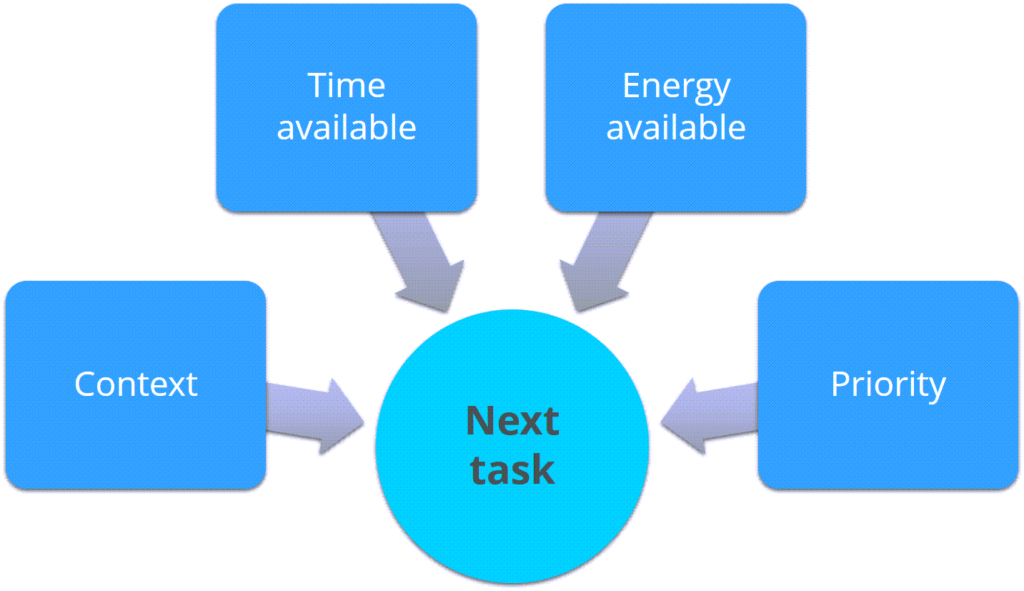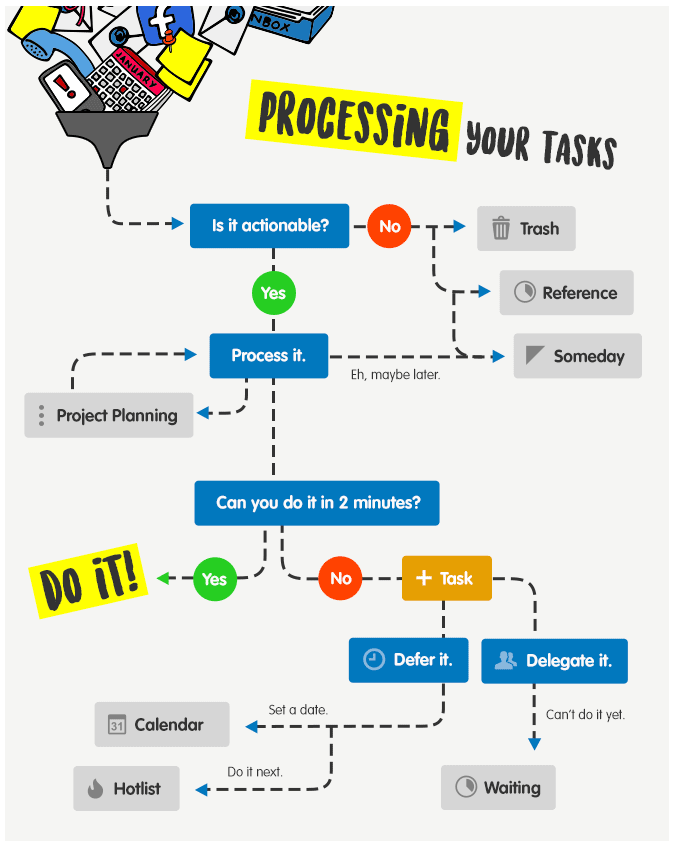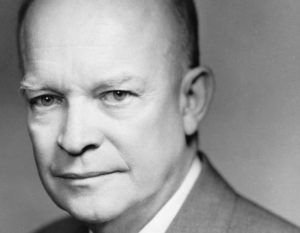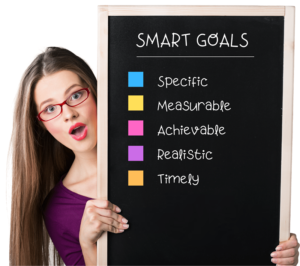
Getting Things Done®, the art of stress-free productivity, was developed by David Allen and is a popular system for increasing productivity.
What makes the GTD® method “Stress-free”?
It comes from your trust in the system to capture everything in your head so, you don’t need to worry about it.
The system increases your productivity by delivering you your “Next Action” based on the “Context of the Moment.”

When organizing your stuff in the system, use Tags to identify the Context for the Task. For instance, a location such as Home, Office, Car, Gym, etc.
You are most productive when you tackle Tasks that you can complete based on your current availability and energy level.
So, in addition to tagging your Tasks with Context, include an estimated Duration and Energy/Difficulty Level to the Tasks — for example, Easy – 15 minutes, Difficult – 30 mins. And set a Priority factor, such as Low, Medium, High and Critical.
No matter where you are, you can be doing something. The system can now deliver you a stream of Tasks based on your location, availability, energy level, and priority.
The Five Step GTD® Process
GTD® is a simple Five-Step process of capturing what has your attention, clarifying what it means, organizing it all, reflecting on it, and of course, engaging on it.

Step One – Capture what has your attention
The Processing, your Tasks illustration to the left, shows the basic workflow for processing your tasks.
Record everything!
It would be best if you had a place to put everything and Digital has its advantages.
But even with scanning physical things as digital documents, there will always be the need to organize some physical reference material.
Don’t worry about “how” when capturing; that will slow you down. Now, if you have ideas, of course, capture them.
The first and most fundamental step is to keep capturing whenever it comes to you. Don’t set aside a time to capture.
Step Two – Clarify what it means.
Is it actionable?
Use Actionable SMART Goals to find out.
It may not be actionable because it is reference material — something essential you want to keep.
If it’s not actionable now, you may want to keep it in your Someday list/folder so you can come back to it someday.
This step in the process is where you want to spend time thinking about your stuff specifically.
Step Three – Organize your Stuff
Tag and Organize all your actionable stuff into Projects, To-do, and Action Lists.
There are many ways to do this, and you need to try different techniques until you find the methods that work best for you.
The Powered by Gnosis website has GTD® explicitly built to help you get the most out of Getting Things Done®.
While organizing your stuff, GTD® suggests that if you can do it within 2 minutes, then do it now. But, yeah, that slows down the process of organizing. So instead, it is better to organize them as To-do items for something bigger. And then engage on that list of To-do items.
Use the Eisenhower Time Management & Prioritization Matrix to help you organize your tasks. Using an Urgency by Importance matrix, the tool enables you to determine if you need to defer or delegate the Task.
Step Four – Reflect and review frequently.
Continually review and update your content to maintain focus.
Like everything else in life, you must remain disciplined and continually work the process.
Step Five – Engage and Get Things Done
Work on the Next Action based on the Content of the Moment, driven by your current location, time availability, energy level, and priority.


